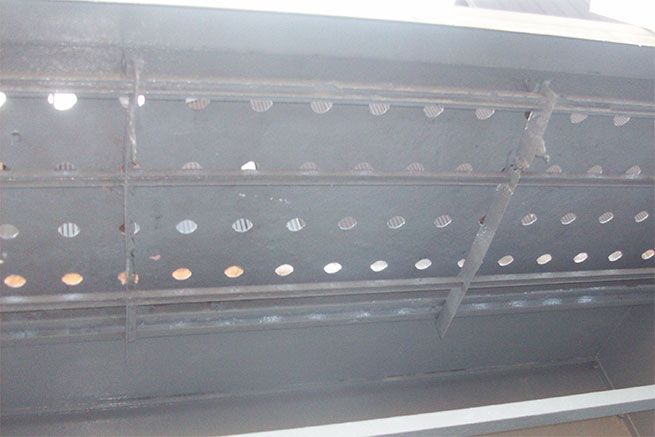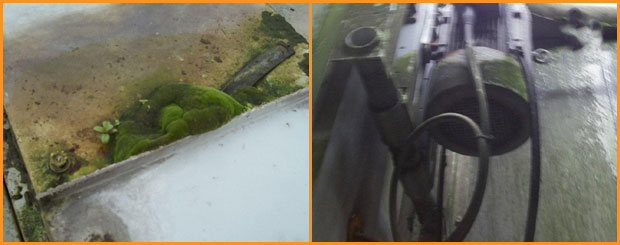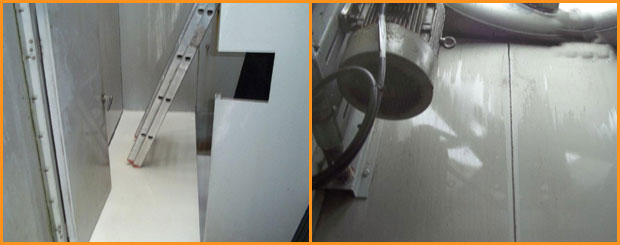Advanced Water
A company overview
EnquiriesCooling Tower cleaning is essential to reduce the build up of accumulated nutrients; a primary cause of Legionella growth. Another problem is water that contains salts such as magnesium carbonate and calcium carbonate which are less soluble in hot water than they are in cold. These deposits, along with the scum that accumulates in cooling systems, can drastically reduce the efficiency, which could affect production processes and chiller operations.

Call our experienced team on:
At Advanced Water Technologies we want to keep you informed and we want to make sure that you have access to all the information you need. You can view all of our accreditations, find out about our services and view important links and legislation information. You can also call or email us by visiting our contact us page.
Advanced Water Technologies has unrivalled cooling tower knowledge and are experts in all cooling tower designs, including their integral parts and associated plant. Advanced Water Technologies' cleaning is performed by experienced internally employed cooling tower engineers to ensure optimal operation and performance of your cooling tower asset and prevent premature failure of components. Advanced Water Technologies take care to remove all accessible parts for cleaning.
Many cooling systems operate on a continuous basis where process conditions preclude total system shutdown except infrequently. Other measures, such as side-stream filtration, more frequent microbiological monitoring, continuous biocide addition, which are reasonably practicable, should be applied and monitored carefully.
Disinfection, cleaning and manual de-sledging of cooling towers should be undertaken at least twice a year, but more frequent cleaning may be necessary depending on local environmental conditions such as dirty atmospheres and the conclusions reached in the risk assessment. Cooling systems that have a short operating period may only need to be cleaned at the beginning and end of that period.
When we first visited this customer their cooling towers had not been maintained for a considerable time, hence their poor condition.
Following a thorough, professional clean Advanced Water Technologies were able to achieve excellent results and have since implemented a complete water treatment management programme for our customer, to ensure their cooling towers continue to run efficiently and compliant with HSE regulations.
This treatment should not be carried out by untrained personnel and should be closely supervised. Building occupants should be warned that the water is heavily chlorinated. If tanks and calorifiers are heavily contaminated by organic materials, the system should be disinfected before cleaning to reduce the risks to cleaning staff and also after cleaning. It may be necessary to add chemical dispersants to remove organic fouling from pipework etc. and chemical descaling may also be necessary. Where possible, cleaning methods should not create an aerosol.

Before Cleaning

After Cleaning
Cooling Tower Cleaning and associated cooling systems reduces the build up of accumulated nutrients; a primary cause of Legionella growth. Another problem is water that contains salts such as magnesium carbonate and calcium carbonate which are less soluble in hot water than they are in cold.
Advanced Water Technologies has unrivalled cooling tower knowledge and are experts in all cooling tower designs, including their integral parts and associated plant. Unlike some companies who prefer to use unskilled, untrained external contractors to do the Cleaning and Chlorination works, Advanced Water Technologies's cleaning is performed by experienced internally employed cooling tower engineers to ensure optimal operation and performance of your cooling tower asset and prevent premature failure of components. Advanced Water Technologies take care to remove all accessible parts for cleaning.
Many cooling systems operate on a continuous basis where process conditions preclude total system shutdown except infrequently. Other measures, such as side-stream filtration, more frequent microbiological monitoring, continuous biocide addition, which are reasonably practicable, should be applied and monitored carefully.
Disinfection, cleaning and manual de-sledging of cooling towers should be undertaken at least twice a year, but more frequent cleaning may be necessary depending on local environmental conditions such as dirty atmospheres and the conclusions reached in the risk assessment. Cooling systems that have a short operating period may only need to be cleaned at the beginning and end of that period.
If on inspection the system shows signs of a significant build-up of deposits or slime, then disinfection and cleaning should be carried out. The use of chlorine or other oxidising biocides to disinfect the tower is an effective approach, provided they are used correctly. These deposits, along with the scum that accumulates in cooling systems, can drastically reduce the efficiency, which could affect production processes and chiller operations.
© Advanced Water Technologies